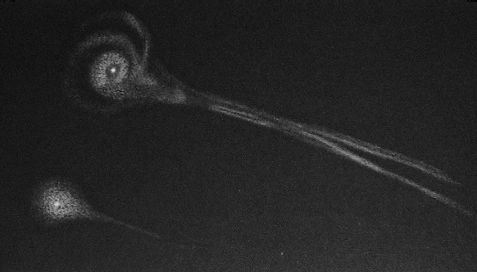Expert observers are reporting an unexpected outburst of a little-known (but historical) meteor shower. The Andromedid meteor outburst began yesterday (December 8, 2013) and might not have peaked yet. The Geminid meteor shower is going on now, too, peaking on the mornings of December 13 and 14. So tonight might be an awesome night to go outside and watch for meteors!
The source of last night’s outburst is Comet Biela, which produced a meteor storm in the year 1872. These meteors are called the Andromedids, and sky watchers began noticing an increase in their numbers two years ago.

Meteor experts at NASA and at universities began noticing the 2013 Andromedid outburst yesterday. Peter Brown (University of Western Ontario) told skyandtelescope.com that the Canadian Meteor Orbit Radar had recorded the outburst and he added:
It is not clear if the peak of the outburst has been reached or if activity may continue to increase.
Bill Cooke of NASA’s Meteoroid Environment Office told spaceweather.com that meteor rates were near 20 per hour (ZHR).
Watch for a possible continuation of the Andromedid meteor outburst tonight (the night of December 9-10, 2013. Just go to a dark location and look up! As usual, it’s likely you’ll see the most meteors when the moon is out of the sky. Find a custom sunrise-set calendar here, and click the moonrise-set boxes.
The Geminid meteor shower is going on now, too, peaking on the morning of December 13 and 14. If you do see meteors, watch to see if they are radiating from two different points of the sky. The Geminids radiate from the constellation Gemini, and the Andromedids radiate from the constellation Andromeda.
Bottom line: The Andromedid meteor shower began an outburst on December 8, and might continue on the night of December 9. Watch for the in a dark sky.
Read more about last night’s Andromedid meteor outburst at skyandtelescope.com











